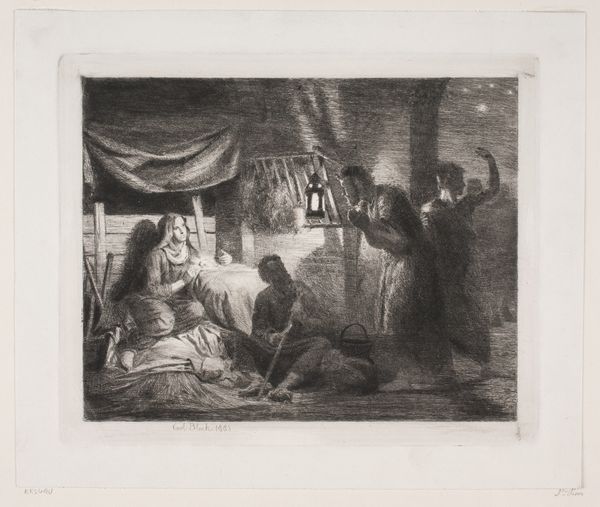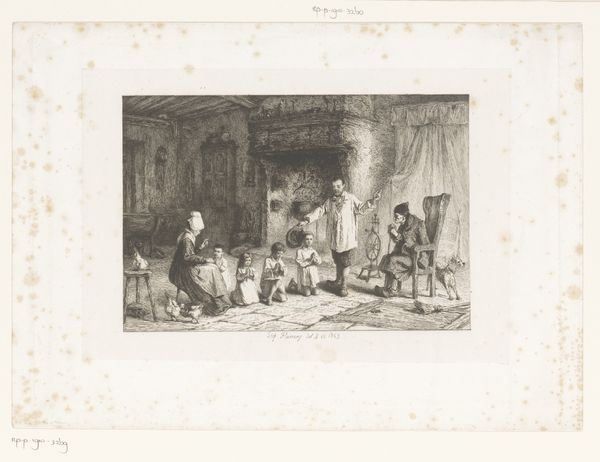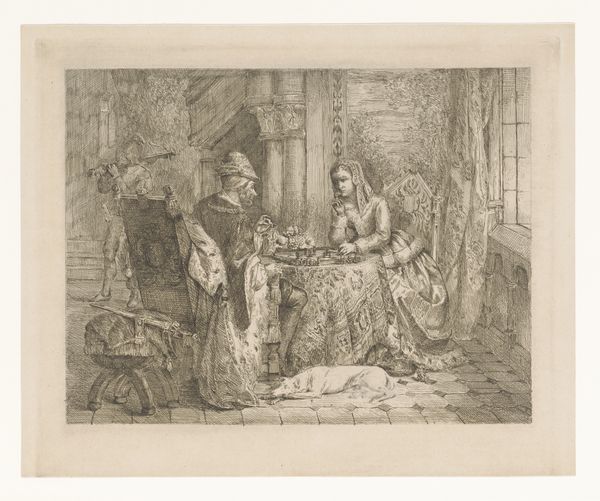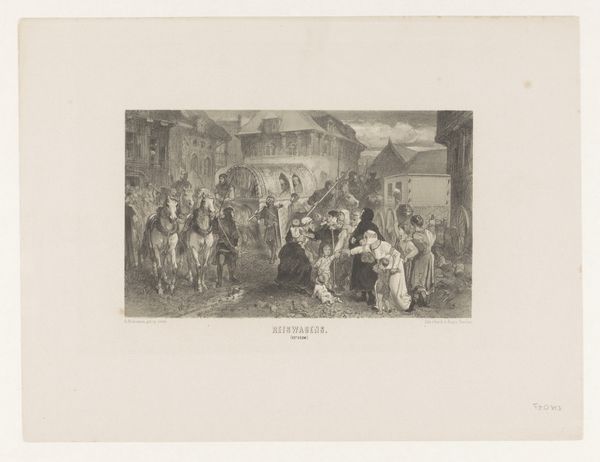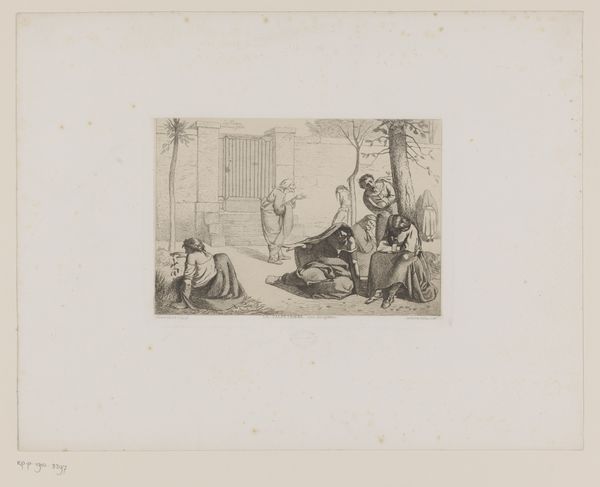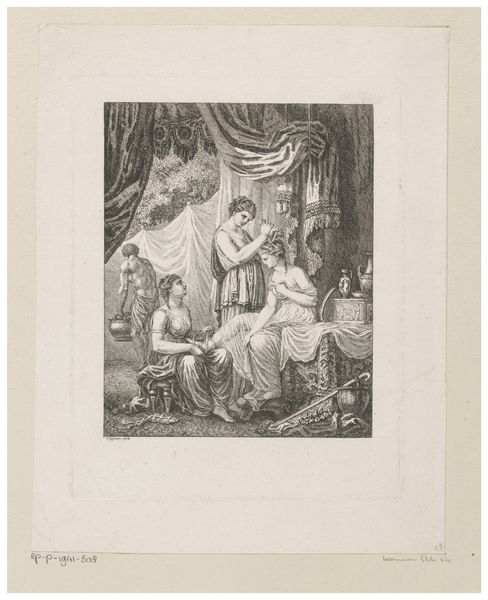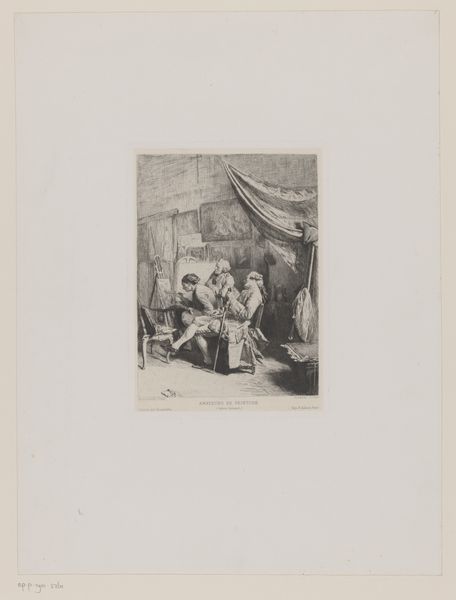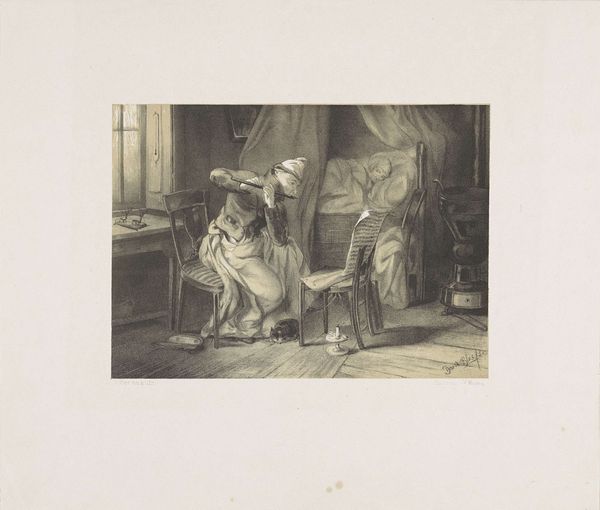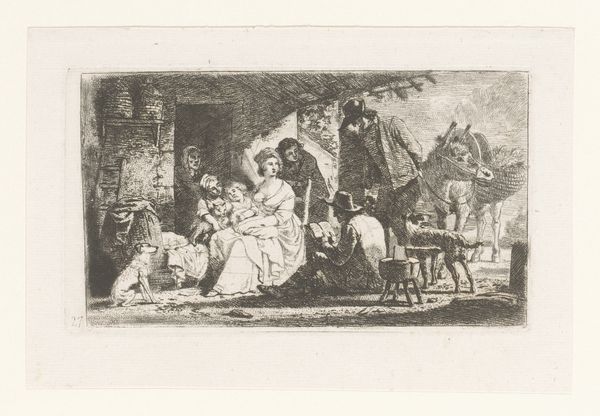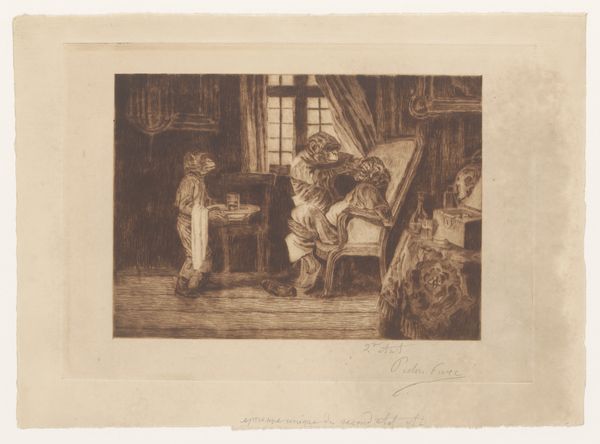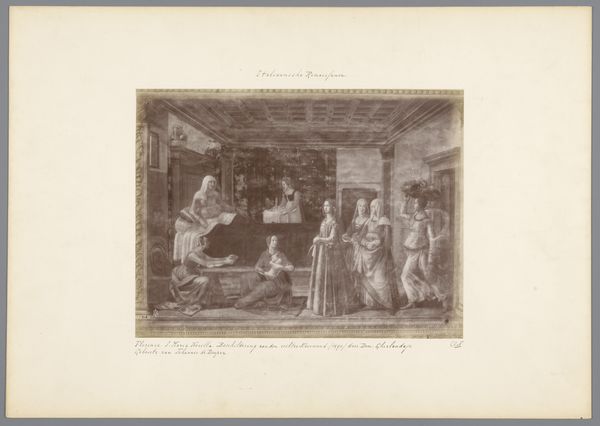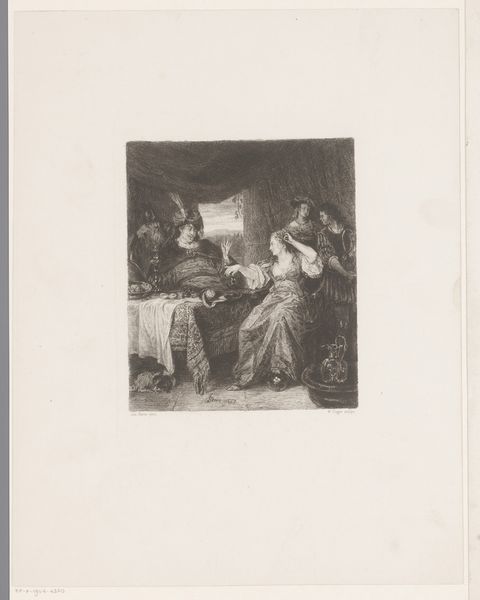
print, etching
# print
#
etching
#
figuration
#
history-painting
#
academic-art
#
realism
Dimensions: 185 mm (height) x 226 mm (width) (plademaal)
Curator: Let's delve into Carl Bloch's "Adoration of the Shepherds," an etching from 1881, currently held at the SMK. Editor: It's a rather intimate depiction, isn't it? It really draws me into this seemingly private moment with the Holy Family. How do you interpret this work within the larger context of 19th-century religious art? Curator: Bloch, though working within the conventions of academic art and realism, engages with potent themes of power, class, and representation. He presents a humble scene – shepherds, the working class, adoring a newborn. What does it signify when those traditionally marginalized are centered in a narrative of divine significance? Editor: That’s a compelling point. It subverts expectations, almost advocating for the importance of the common person. The etching medium itself, making the image accessible through reproduction, seems to support that. Curator: Precisely. Etchings democratized art in a way. And consider the "history-painting" tag assigned to it. Whose history is deemed worthy of depiction? How does Bloch’s choice to portray this particular moment, this intersection of the divine and the everyday, challenge or reinforce existing power structures? What statement does it make, compared to other, grander religious paintings of the era? Editor: I see what you mean! It’s less about glorifying the divine in a detached, untouchable way, and more about finding it within the quotidian experiences of everyday people. It challenges the concept of history, placing those who often go unnoticed at its center. Curator: Exactly. It encourages us to reconsider the accepted historical narratives, searching for the stories of the silenced and underrepresented, and contemplate the role of art in challenging oppressive norms. Editor: That really opens up a new way of looking at this seemingly simple religious scene. It's less about piety and more about the politics of representation! Curator: Indeed! It allows us to recontextualize even well-known narratives.
Comments
No comments
Be the first to comment and join the conversation on the ultimate creative platform.
